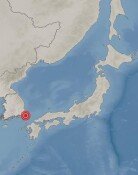Where Was Patriot Ahn Jung-geun Buried?
Where Was Patriot Ahn Jung-geun Buried?
Posted March. 26, 2010 03:01,
The body of independence fighter Ahn Jung-geun was put in a coffin on the morning of March 26, 1910, in Harbin, China, according to a Japanese colonial-era document owned by the Japanese Foreign Ministrys diplomatic history museum.
The coffin was taken to a prison church for prayer and then buried at the prison cemetery. The location of the cemetery remains unknown, however.
The Japanese government is presumed to have the relevant documents, but has not disclosed where Ahn was buried. It simply said it will consider cooperation if so requested.
The Korean government will look for documents related to Ahns burial through diplomatic efforts with Japan and China. Seoul will gather the documents first before launching an excavation project for his remains based on the information.
The Foreign Affairs and Trade Ministry in Seoul said yesterday that it will form a task force to support activities by a government-civilian joint excavation team to be soon established. On Feb. 11, Foreign Minister Yu Myung-hwan asked visiting Japanese counterpart Katsuya Okada to cooperate with the excavation of Ahns remains. Okada is said to have responded that he will see what he can do.
We pay attention to the fact that the Japanese government does not deny having (Ahn-related) documents but says (their existence) is not confirmed, a ministry official said. It is our responsibility to do our best even if the possibility is just one percent. We expect Japan to cooperate.
A deputy spokesman for the Japanese Foreign Ministry said Wednesday that despite Tokyos efforts, documents on Ahns burial have not been discovered yet.
China is relatively more cooperative than Japan, but is said to have a cautious attitude considering its relations with North Korea. Ahns hometown is Haeju in North Koreas Hwanghae Province.
Beijing will likely cooperate with a joint search by the two Koreas or South Korea alone if North Korea agrees.
Tokyo has continually rejected Seouls requests for documents on the location of Ahns burial since 1993. South Korea made the same request in March 2008, but Japan said it could not find any.
After certain documents were discovered after South Koreas establishment of official diplomatic relations with China in 1992, an onsite survey was conducted in areas where Ahns body could have been buried.
The two Koreas formed a joint search team to examine a prison in the Chinese city of Lushun, where Ahn was incarcerated after his 1909 assassination of Hirobumi Ito, the head of the Japanese colonial government in Korea at the turn of the 20th century. The project failed to produce significant results, however.
In 2008, Seoul sent five geological experts and exploration equipment to a site on a hill northwest of the prison. The only things found were animal bone fragments and some 1,000 pieces of pottery.
So where could Ahns remains be? Chances are that he was buried near the Lushun prison, but the Japanese government might have moved his body elsewhere in light of the internationally sensitive nature of his execution.
Lee Guk-seong, 66, the grandson of Korean patriot Lee Hoe-yeong, who was also executed at the Lushun prison, claims to have been to Ahns grave. He Guk-seong said the graves location matches what was described in the memoir of a Japanese doctor who worked at the prison in the 1940s. According to the memoirs, Ahn was buried 300 meters away from one end of the prison.
pen@donga.com







